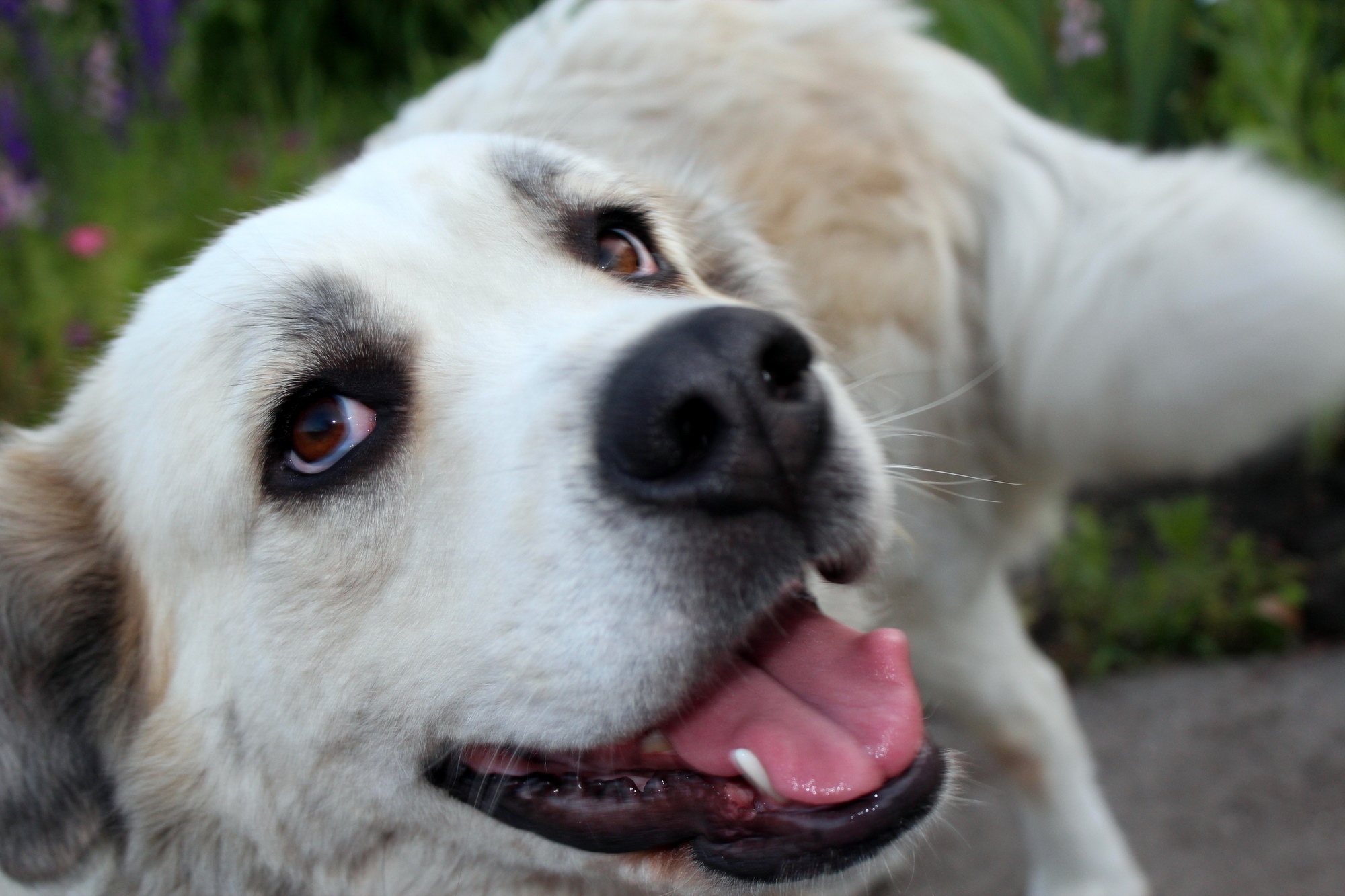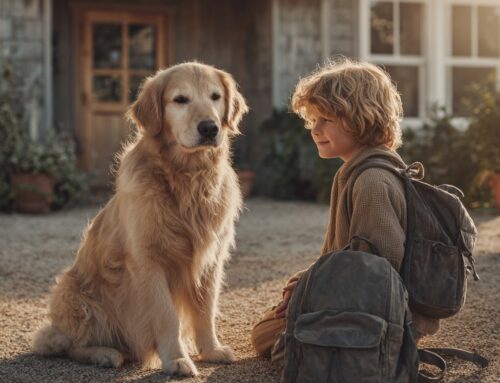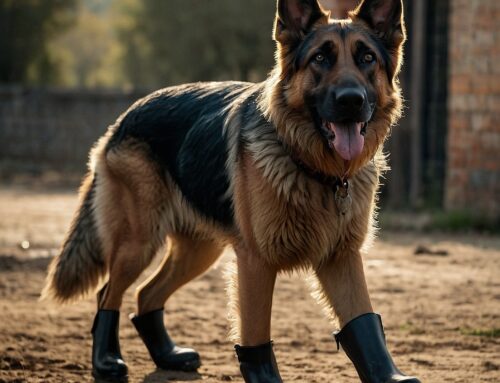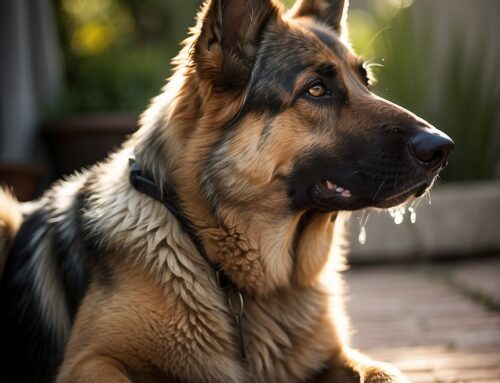Humans laugh, cry, yell, and whisper. We grimace, smile, frown, and sneer. From one human to another, we mostly understand a variety of communication signals. Dogs also communicate. Do you understand the multitude of communication signals your dog gives when she’s trying to tell you something?
Read on!
Your dog communicates using a variety of signals including these parts of the body:
- Tail
- Facial expressions
- Eyes
- Ears
- Vocal communication
- Body postures
Used in combination, your dog can tell you when she’s stressed, fearful, happy, sad, excited, angry, and more. But let’s look at what your dog’s many different signals mean.
Tail
Your dog’s tail usually gives you the first clue about what she’s trying to say. A tucked tail can indicate fear or submission, while a tail held high and curved is a warning that your dog may be ready to bite.
More specific meanings include …
Wagging Tail
A wagging tail is all good, right? Usually, but not always. A wagging tail can show a variety of emotions ranging from happiness to excitement to frustration, and many things in between. For example:
Fast wagging
The faster the wagging, the more excited the dog.
Slow wagging
Wagging that is slow, sweeping, and moving side-to-side means your dog is happy and relaxed – such as when you come home, and she greets you.
Wagging to the right
A dog who wags more to the right is usually feeling positive about something – like seeing you!
Wagging to the left
In contrast to the right wag, wagging to the left can indicate a dog feels negative about whatever she’s facing.
Circle wagging
This is the wag of all wags! When your dog’s tail spins around and around, this is the ultimate tail of a happy dog!
Facial Expressions
Just like us humans, a dog’s facial expression yields all kinds of information about what she is saying to you. For example:
Yawning
So, like us, dogs yawn when they are tired or bored, right? Yes, sometimes, but not always. For a dog, yawning may deliver a message of fear or stress. In fact, the act of yawning helps her deal with the stress of the moment by calming herself. Next time you take your dog to the vet, notice if she yawns on the way there.
Another interesting fact about dogs yawning is that often, when you yawn, your dog may “catch it” and yawn, too.
Lip licking
It’s true that dogs will lick their lips after eating, but when not related to food or treats, lip licking communicates anxiety about whatever is happening.
Closed mouth
A dog whose mouth is shut tightly it may be on alert.
Smiling
Yep, dogs do smile! Sometimes the “smile” is the start of a warning message and will be accompanied by growling and rigid body posture. Other times, it is just a real, happy, honest-to-goodness smile!
Panting
Panting is a physical necessity when a dog needs to cool herself, but it can also be an anxiety and stress reliever, just like yawning.
Open mouth
When your dog has a loose, open mouth she is telling you she’s feeling calm and relaxed.
Eyes
The adage that “The eyes are the window to the soul” is true with dogs. Perhaps you are already well versed in what your dog’s eye expressions mean.
Soft eyes
A squinting dog is displaying soft eyes, which means she is calm, happy, and relaxed.
Hard eyes
A hard eye is cold and says the dog is unhappy. When it’s a hard stare, the message is one of warning.
Eye contact
How a dog looks at you or something else has several meanings. In contrast to a hard stare, looking away is an attempt to diffuse a situation. Also, a stressed or uncomfortable dog will often look away from you.
Whites of the eyes
And yes, there is a message here, too! A dog who shows the whites of her eyes tells you she may be stressed by something or someone who is doing something to make her uncomfortable.
Ears
Did you know that a dog has 18 muscles to control her ear’s movements? Not only do these muscles control how and where she hears, but they also help her communicate messages.
Forward ears
When her ears face forward, your dog is at attention and ready to go! This position makes her ready for play, or aggression, depending on the situation.
Ears flat
If your dog’s ears are lying flat and her tail is wagging, this is a message of happiness. On the other hand, if flat ears are accompanied by a growl, she is ready to get upset.
Vocal Communication
Many dogs could join a local chorus as a result of their range of vocal tones and sounds. And along with these countless sounds are myriad meanings and messages. Such as …
Soft growl
Better watch out, is the meaning of a low-pitched, soft growl. This sound is associated with aggression.
High growl
This growl is mostly associated with playtime, such as when you and your dog play tug-of-war.
Long growl
The long growl, accompanied by an intense focus, means your dog has made her mind up about something in an assertive way.
Bark: high pitch
Your dog is excited!
Bark: low pitch
The meaning here is your dog may be afraid.
Whine
When your dog needs or wants something, she will probably whine.
- I’m hungry: whine
- I need to go out: whine
- I don’t want you to leave me: whine
- I don’t feel well: whine
Howl
Dogs mostly howl to “talk” to other canines, or, sometimes, to alert their owners to something.
Sounds of contentment
Some sounds that indicate the epitome of relaxation are rumbles, sighs, and groans. In fact, not only do these sounds say your dog is relaxed, but they are also soothing to their humans.
Body Postures
Dogs are quite adept at communicating through their body movements and postures, which include …
Down dog
If you are familiar with yoga, you know this posture is when the dog crouches low on the front legs with her butt end staying up in the air. This position is an invitation to play.
Splayed body
A dog who splays her body flat down on the floor is afraid or stressed.
Trembling and shaking
It can be hard to distinguish trembling from shaking, but a trembling dog is either telling you she’s cold, scared, or ill.
Beautiful belly
When your dog rolls onto her back and exposes her belly, she is either demonstrating submissiveness or asking you for a nice belly rub.
Licking
When your dog licks you, it is a sign of affection. When a dog licks her paws constantly, she may have a skin problem or be bored.
Pacing and spinning
Both of these postures mean your dog is anxious, with spinning showing a more extreme level of anxiety. However, some dogs spin when they are getting ready to hunker down in their bed for sleep.
Raised hackles
When your dog raises the fur at the base of her neck, this says she is on alert and uncomfortable with a situation happening or something she sees that is causing possible distress.








